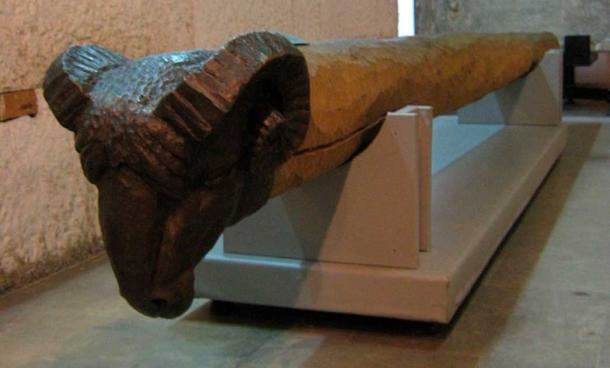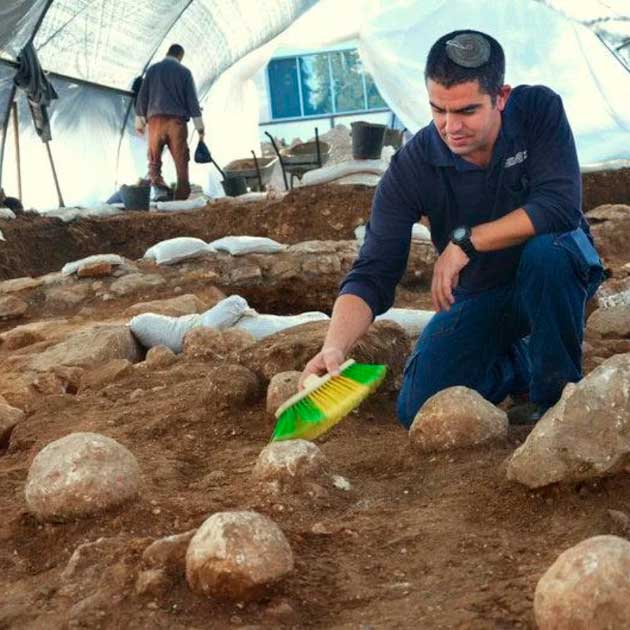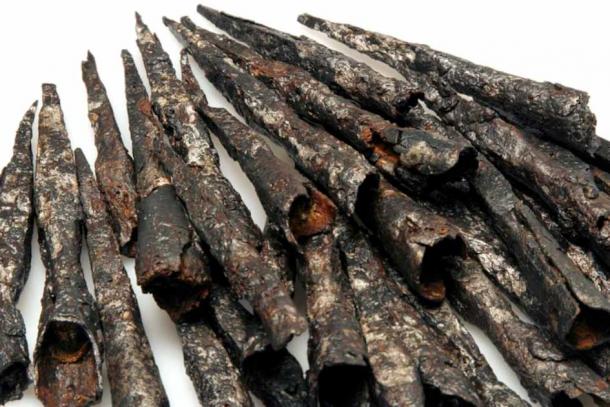
Roman Siege Engines Tracked and Traced in Jerusalem
An Israeli archaeologist has been digging up and plotting the location of big roundish rocks in a specific area of ancient Jerusalem. But these are no building blocks, quite the opposite. They were fired into the city's walls by Roman siege engines in the Jewish–Roman wars. And now, for the first time, this Israeli archaeologist has mathematically plotted out the location from which those Roman siege engines fired their projectiles.
The Jewish–Roman wars occurred between 66 and 135 AD when the Jews of the Eastern Mediterranean launched a series of large-scale revolts against the Roman Empire. No longer would the Jews stand for high taxation and religious repression of Emperor Nero. But the Roman siege engines made it difficult for Jewish rebels to gain any ground.
Plotting the Ballistics of Ancient Roman Siege Weapons
After attacking high-status Roman citizens in an act of retaliation, the Roman governor of Judea arrested Jewish community leaders and destroyed the Second Temple. With their spiritual heart ripped out, the Jews had little left to lose, and a wide-scale Jewish rebellion forced Roman officials to flee Jerusalem.
Now, Israel Antiquities Authority (IAA) archaeologist, Professor Kfir Arbiv, has applied “computerized ballistic calculations” to projectiles he discovered beneath the Russian compound district of Jerusalem . With his new found data he has now identified the launch location of the Roman siege engines used during the attack on the Second Jewish Temple.
- Ancient Scots Hit By Roman Slingshots With the Force of a .44 Magnum
- Catapults: The Long-Reaching History of a Prominent Medieval Siege Engine

A powerful Roman battering ram, which was the first attack weapon used in the Roman sieges of Jerusalem, with a ram's head at the end on display in the National Military Museum, Bucharest, Romania. (Cristian Peter Marinescu-Ivan / CC BY-SA 2.0)
First A Good Battering, Then the Punishment Began
The first siege engine device ever recorded in history was the battering ram. These stripped and fire-hardened tree trunks were used by Spartan warriors in the 9th century BC. Later Roman siege engine battering rams were adapted from Hellenistic siege technology, and they played a major role in the siege of Jerusalem in 70 AD.
Jerusalem was the center of Jewish rebel resistance in the Roman province of Judea. The future emperor Titus and his trusted Vespasian, a Roman general, besieged the city. Following a brutal four or five-month onslaught the Romans eventually destroyed the city and the Second Jewish Temple. Then, a systematic punishment of the Jewish people began.
Flattening The City Of God with Roman Siege Engines
Artillery weapons were instrumental in the numerous successes of the Roman army. They were especially used in siege warfare, both for offence and defense. Fixed on board ships, these war machines known generally as ‘ ballistae,’ fired bolts and heavy rocks which punched holes in enemy ships and forts, and troop formations.

Kfir Arbiv, IAA excavation director, cleans a ballista stone at the Russian Compound excavation site, which he calculated was launched by Roman siege engines firing from the Jerusalem neighborhood of Nahalat Hashiva, a couple of hundred meters (yards) south of where the stone projectiles were found. (Yoli Schwartz / Israel Antiquities Authority)
For the siege of Jerusalem, Titus and his legions deployed several types of siege engines. However, the primary weapon used to crush Jerusalem and the Second Jewish Temple were stone ballista balls launched from catapults. The historian Titus Flavius Josephus said, “nothing was left that could ever persuade visitors that it had once been a place of habitation.”
According to an article in Haaretz, Dr Arbiv studied the local topography and the location of the Second Temple period city walls. The researcher then compared his observations with ballistic calculations (note : the word ballistic is derived from the Roman word ballista). With everything else stripped away, Dr Arbiv essentially calculated the launching angle of the ballista stones and from there determined where the ballista stone projectiles were launched from.
Furthermore, heaps of ballista stones were identified in the Russian Compound “where the remains of the outer wall has been identified.” Based on these specific rocks the new study speculates that this was where the legions of Roman soldiers finally breached the city defenses.
In conclusion, the researcher says that the bulk of the Roman siege weapons were placed in Cats Square, the nickname for the modern Jerusalem neighborhood of Nahalat Hashiva, which is a couple of hundred meters south of where the stone projectiles were found.

Iron tips of Roman catapult projectiles found in Jerusalem. (Ingeborg Simon / Haaretz)
They Make A Desert And Call It Peace
When the Caledonian (Scottish) hero Calgacus was fighting Tacitus' father-in-law, Agricola, he famously said that the Romans in Britain “make a desert and call it peace." But nowhere did this quote apply more so than in Jerusalem. Soon after the barbaric siege of Jerusalem, in 75 AD, the Roman Temple of Peace (Forum of Vespasian) was built to celebrate the conquest of the city.
- Were Catapults the Secret to Roman Military Success?
- The Sicarii: The Jewish Daggermen With a Thirst for Roman Blood
This symbol of Roman dominance and new rule even contained the sacred temple menorah from Herod's Temple. And to further rub salt into wounds of the Jews, Rome was in a great part built on funds created with stolen Jewish treasures.
This new study helps put all these events into historical context by taking the story of the Roman-Jewish war back to basics, answering not why, but precisely how the Romans took the City of God with their deadly siege engines.
Top Image: The Russian Compound excavation site in central Jerusalem and the Roman siege engine ballista stones found there, which were then used to plot the launch location of the projectiles. Source: Yoli Schwartz / Israel Antiquities Authority
By Ashley Cowie















